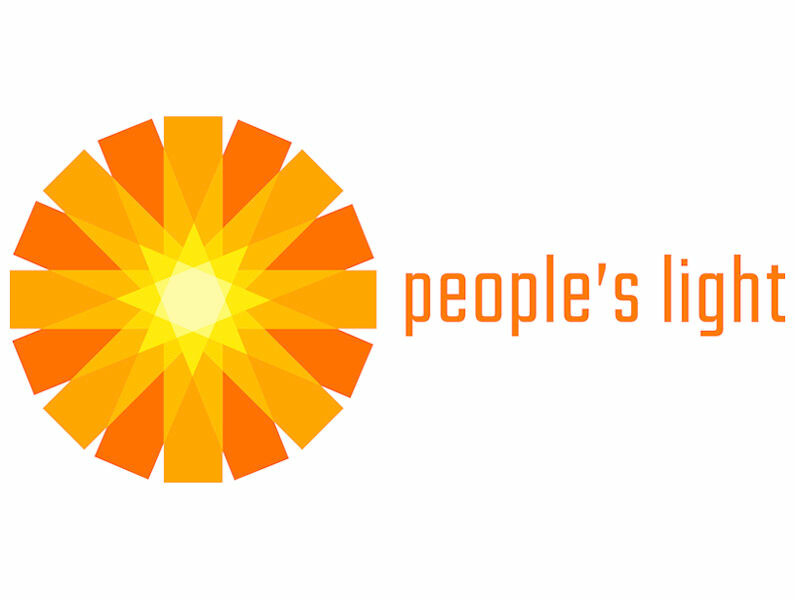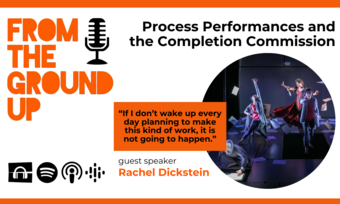Being Regional for a Reason
Matchmaker, Matchmaker
This is the third in a series of blogs that chronicle the birth and infancy of New Play Frontiers. I will share the origins of this program, its impact on our organization, the process of selecting playwrights and community partners, as well as the discoveries we make during the residencies. Beyond reporting out, I hope this series will spark further conversation about the different motives for theaters offering playwright “residencies.” Who are we most trying to serve? What responsibility, if any, should “playwrights-in-residence” have to the individuals, organizations, and communities funding and supporting their work? And how can visiting playwrights participate in an institution’s effort to celebrate its regional identity? Find the full series here.
At our best, theaters are matchmakers. We bring together collaborators to share individual gifts and create something new together. We cultivate audiences for artists and artists for audiences. We connect students to mentors, donors to dramatists. We find critics to offer context and examination to better inform the dedicated and the curious. We introduce neighbor to neighbor and we tether frequently floating souls to their community, their past, and their collective yearnings. At our best, theaters are conduits and conspirators to these unions. We provide the terrain for the first date, first kiss, and first promise of commitment. So when we fail it is largely because we have forgotten this essential service. We fail when the mate for whom we are playing sadchan becomes, in fact, ourselves and not the playwright, the apprentice, the philanthropist, the teenage outcast, the subscriber, or the teacher.
When guiding lights like P. Carl, Todd London, Diane Ragsdale, Ralph Remington, and others speak out about the relative security theater administrators possess compared to that of playwrights and other freelance theater makers, I interpret it in these terms of matchmaking. Longstanding, institutional theaters like the one I joined nearly two years ago may be in perpetual peril, but we are in a privileged position to determine which individuals enjoy the opportunity to connect and to grow with someone else in a meaningful, sustainable way.
At our best, theaters are matchmakers. We bring together collaborators to share individual gifts and create something new together.
We took this privileged position very seriously at People’s Light when we conceived New Play Frontiers (NPF) and selected Eisa Davis, Colman Domingo, Kate Fodor, Karen Hartman, Dominique Morisseau, and Kathryn Petersen to participate in the first round of residencies. The invitation to these six writers emerged from a process we called “a theatrical version of eharmony.com” in our grant proposal to the Pew Center for Arts & Heritage’s Philadelphia Cultural Management Initiative (PCMI). The reference to the dating website may have appeared like cute shorthand to grab the attention of the Foundation’s panel, but we meant it. Thanks to PCMI funds, Amy Wilson, our Director of Data Analysis and Information Technology, purchased, designed, and launched a NPF database that contains and collates information about local stories, community partners, playwright candidates, and more. The “data” is gathered by a cross-departmental committee comprised of staff from our artistic, education, production, development, marketing, general management, and audience services departments who contribute information on the constituencies with whom they have contact. They also organize gatherings with Board Members, patrons, vendors, students, teachers, community leaders, and local politicians to discuss our initiative, discern what stories and issues are of particular significance, and cultivate community resources for this endeavor.
To help select playwrights as well as design and coordinate their residencies, we hired Vern Thiessen as my NPF Project Associate. Vern is a Governor General’s Award winning playwright with an extensive background in playwriting-in-community. He has participated in and led numerous residencies in Canada, U.S., and Italy. Vern and I compiled a list of over two hundred playwright candidates based on our own knowledge and recommendations from field-leaders across the country. We read the work of these writers and researched their backgrounds. Together with the NPF Committee we arrived at a sequence of filters to determine which playwrights we would interview. Due to budget limitations on travel, we realized we had to narrow our list to playwrights who reside along Amtrak’s northeast corridor (we very much hope we can expand the geography of our search in future rounds). We prioritized writers with a clear investment and skill in research-based and/or community-based theater making. We highlighted writers who possess an ability to tell stories that bring diverse populations together, who make challenging political and social dynamics accessible to a variety of audiences. We took into consideration reports on their comfort with new places and circumstances, their follow-through with commitments, and their willingness to experiment.
We arrived at a manageable list of twenty-four candidates who Vern and I interviewed, primarily in person, but on a few occasions by phone. We used a template of questions designed with the NPF Committee. The aim of these questions was to determine the likelihood that the resources of our region would inspire the candidate’s strongest work. Matches are good fits, but they also light fires. We did not want writers for whom this work would be a paid assignment. We sought writers who could specifically articulate their passion for the aspirations of this program, who perceived it as an opportunity to discover our region, expand their creativity, and fulfill their own goals and ambitions.
I can’t begin to express how inspiring each one of these interviews turned out to be: the depth of curiosity, of intellectual rigor, of empathy exhibited by every single candidate. It was exhilarating and made the decision process near impossible. The final decision, however, could never be made by an algorithm on a computer program. The NPF Committee reviewed all the matchmaking research, and used our instincts and experience to arrive at the six writers we thought would most benefit from and contribute to the program at this time. In addition, Vern and I decided the writers should start their residencies together with a five-day “Orientation and Introduction” phase where they visit a number of different neighborhoods, meet various potential community contacts, and then share their initial impressions and ideas with each other. The decision to move forward with this idea (ultimately in two groups of three) also affected the selection process as we discussed which writers might gain the most from each other. More matchmaking.
In the end, we invited one local writer (Petersen), two writers with past history in Pennsylvania (Domingo and Fodor), and three writers for whom our region is a new frontier (Davis, Hartman, Morisseau); one writer has worked previously at People’s Light (Petersen), one worked in the past with me at Epic (Fodor), and the rest are new collaborators. All six have now participated in their “Orientation and Introduction” week. In my next blog, I will share their activities and responses during this first phase of their residencies.










Comments
The article is just the start of the conversation—we want to know what you think about this subject, too! HowlRound is a space for knowledge-sharing, and we welcome spirited, thoughtful, and on-topic dialogue. Find our full comments policy here